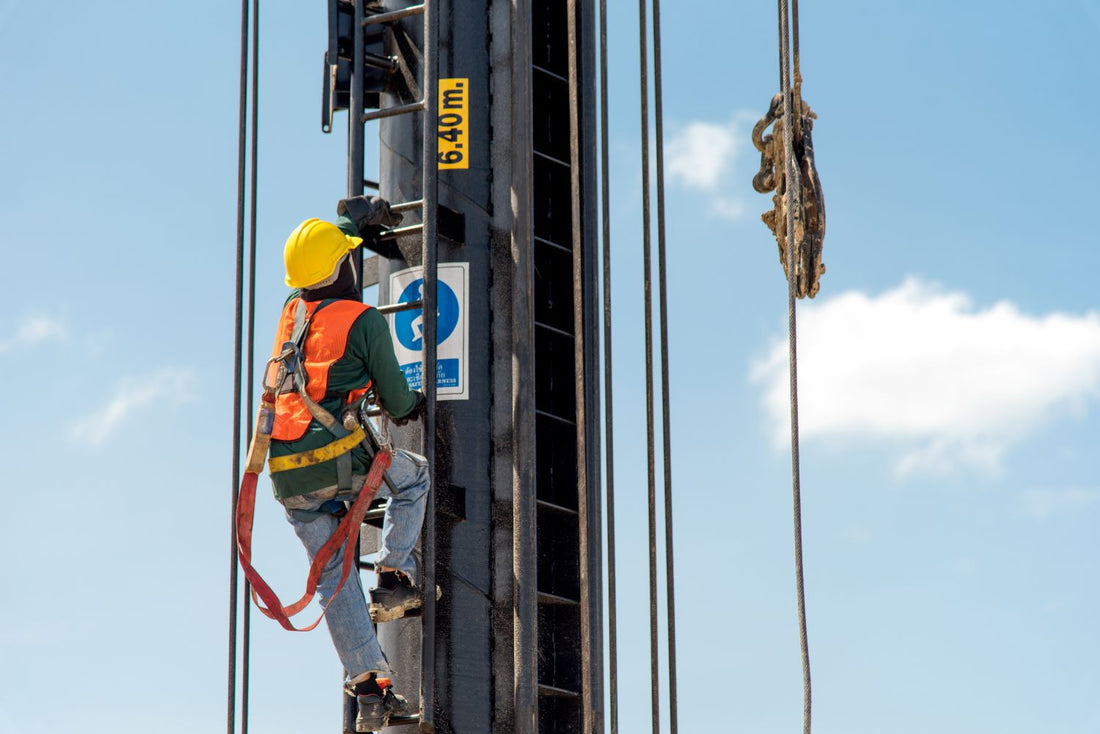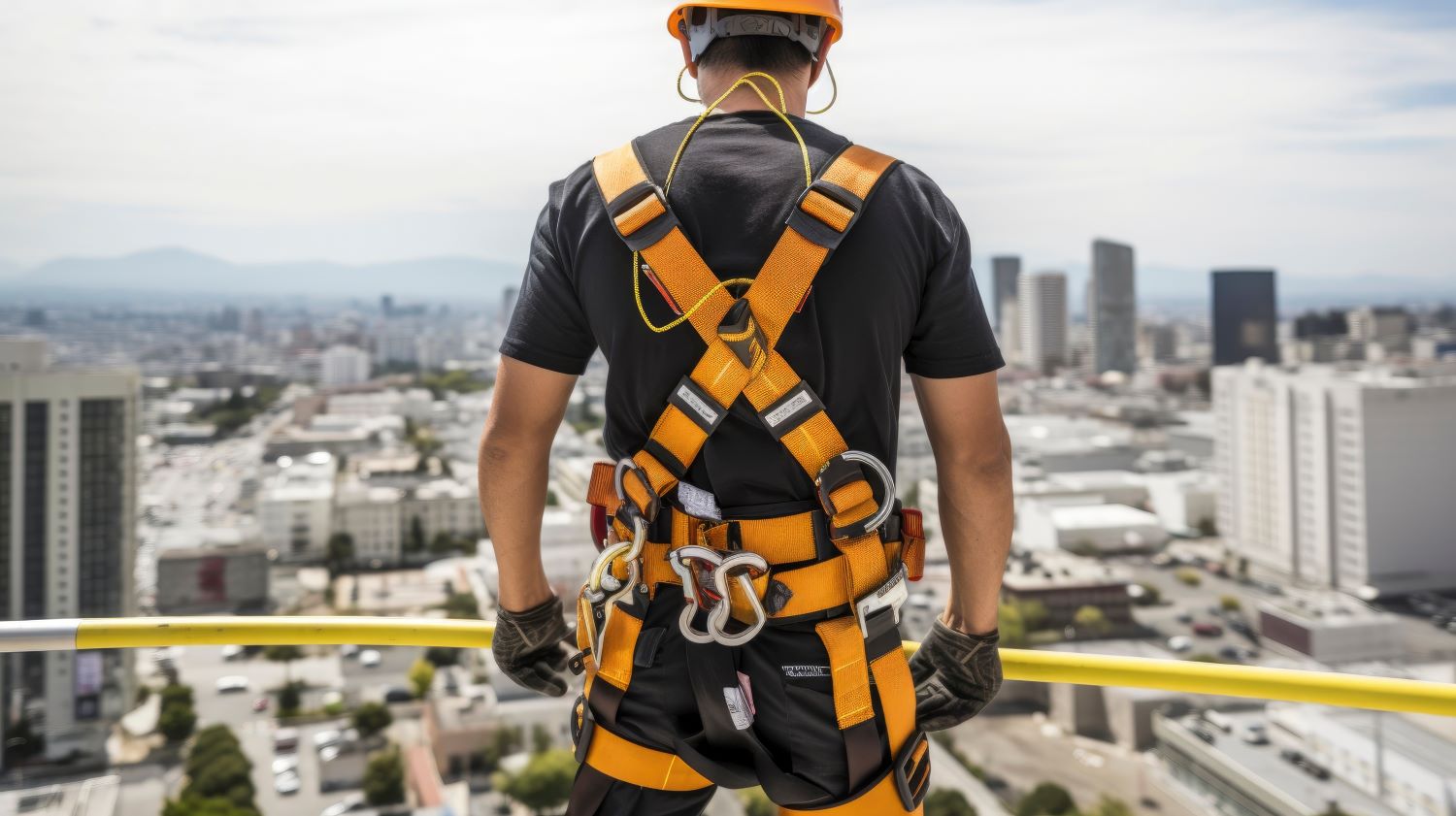
Creating a Fall Rescue Plan for Your Jobsite: Everything You Need to Know
For any job that involves working from various heights, the potential for falls is a serious concern. In fact, fall hazards continue to dominate work-related injuries and fatalities in a number of industries and sectors, including construction, utilities, telecommunications, window cleaning, longshoring, etc.
In instances where falls occur, companies should have fall rescue plans in place. A fall rescue plan not only ensures the safety of workers but also minimizes the impact of accidents by outlining a systematic approach to respond to fall incidents. This involves everything from ample fall protection, proper worker training, and accelerated response from local emergency services.
We explain below the importance of having a fall rescue plan in place and how you can establish an all-encompassing version for your workplace.
What is a Fall Rescue Plan?
A fall rescue plan is a comprehensive document outlining the procedures, protocols, and resources necessary to respond to a fall incident. It includes detailed instructions on how to rescue a fallen worker safely and efficiently, as well as identified personnel and services needed to complete a safe rescue. Fall rescue plans provide guidance for workers on how to rescue themselves from a fall, or how to help other workers who have fallen out of their suspended states.
The fall rescue plan should be tailored to the specific needs and risks of the workplace, considering factors such as the height of the working environment, the type of work being performed, and the equipment used. Each site is never the same; therefore, a unique fall rescue plan should be established for every location.
Why is Having a Fall Rescue Plan Important?
There are many factors to creating and implementing a fall rescue plan for your workplace:
-
Worker Safety: Falls from elevated workspaces can result in severe injuries or even fatalities. Having a well-thought-out rescue plan demonstrates a commitment to employee safety, fostering a secure working environment.
-
Legal Compliance: Many occupational safety regulations mandate the development and implementation of fall protection plans. Adhering to these regulations not only keeps your workforce safe but also ensures compliance with legal standards.
-
Efficient Emergency Response: A fall rescue plan facilitates a rapid and organized response to accidents. Quick and efficient response times can significantly impact the severity of injuries and improve the chances of a successful rescue.
-
Risk Mitigation: Identifying potential fall hazards and creating a plan to address them is a proactive approach to risk mitigation. This not only protects workers but also safeguards the organization from potential legal and financial repercussions.

How to Create a Fall Rescue Plan
When creating a fall rescue plan, there should be laid out procedures documented for self-rescue, assisted rescue, and multi-person rescue and evacuation.
1. Conduct a Risk Assessment for the Worksite
Each worksite is different from the other, and no job rescue plan will be the exact same as the next.
Begin by conducting a thorough risk assessment of the workplace and identify potential fall hazards. This includes any holes, window and wall openings, leading edges, elevator shafts, and more. Once completed, then assess the severity of each risk, and determine the appropriate control measures to keep your workers safe.
2. Fall Protection Equipment
Next, specify the fall protection equipment required for the job, including safety harnesses, lanyards, and anchor points. Make sure that the equipment meets all safety standards and fits to the needs of the individual worker, including OSHA's list of safety and health standards related to fall rescue plans.
When documenting the fall protection equipment in your fall rescue plan, it's important to include all of the equipment information like the manufacturer's name and other necessary specifications. The fall rescue plan should also include:
- the locations of anchorages and materials (should be easily accessible),
- any attachments to safety harnesses, including lanyards and SRLs,
- quantities of fall protection equipment,
- types of equipment and compliant alternatives.
Be as detailed as you can when documenting your fall protection equipment. Also, include information on the maintenance, inspection, and storage of your fall protection equipment before, during, and after use. This establishes processes that keep your equipment safe and organized.
3. Rescue Formations
The next step involves documenting the different types of rescue formations. As we mentioned, there are a few different types of rescue:
- Self-Rescue: When a person falls on the job, but is conscious and active to rescuing themselves with the equipment at hand.
- Assisted Rescue: When a person falls on the job, but is unconscious or injured and cannot rescue themselves, requiring the assistance of a nearby worker.
- Multi-person Rescue: When several workers are at risk of danger and need to evacuate from their work location.
Self-rescue and assisted rescue scenarios require a step-by-step process documented in the fall rescue plan. These scenarios also need to be included in worker training sessions.
For multi-person rescue teams, companies may designate and train an on-site team responsible for executing a fall rescue plan. This team should be well-versed in rescue techniques, first aid, and the proper use of rescue equipment. A designated rescue team should not be a replacement for outside emergency crews and should be the first line of rescue in any sort of job-related fall.
You should also list any emergency contact information, including local rescue services and medical facilities. Ensure that all employees are familiar with the emergency procedures and know how to initiate a rescue operation.
4. Communication Protocols
It's important to establish clear communication protocols for seamless coordination during a rescue. This includes designating people as rescue leads, organizing workers into dispatching teams, and means of communication (i.e. radio channels, signal systems, etc.).
5. Documentation and Review
Once you include everything in the fall rescue plan, document everything in a clear and accessible format. Ensure that all information is up-to-date, accountable for all members of your team, and compliant with current safety standards.
Regularly review and update the plan to account for changes in the workplace, equipment, or personnel.
6. Training and Education
Lastly, provide comprehensive training for all employees involved in work at heights. This should include proper use of fall protection equipment, recognition of fall hazards, and instructions on how to summon help in case of an emergency.
Conduct regular mock drills to test the effectiveness of the fall rescue plan. Simulate various scenarios to ensure that the rescue team is well-prepared to handle different situations.

Fall Protection from US Cargo Control
Make sure that your fall rescue plan includes high-quality fall protection equipment. US Cargo Control offers many fall protection supplies from trusted brands like DBI Sala, Protecta, MSA, Honeywell, Guardian, and FallTech. Complete your personal fall arrest systems with essential supplies, including:
As always, our product experts are available to help you with any questions on our fall protection equipment. Call or email us today, and our experts will work with you to get you what you want, when you need it.
More Articles You May Like:
ANZI Z359.14 2021 Update for SRLs
Forklift Safety: 10 Tips for Safe Use
Understanding Tensile Strength for Lifting & Rigging Equipment





